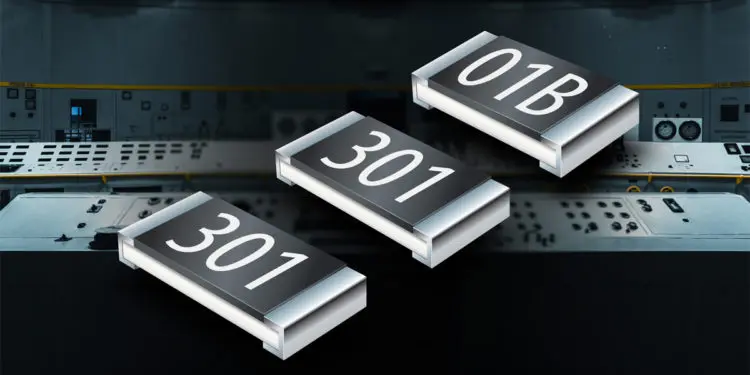Bourns, Inc., a leading manufacturer and supplier of electronic components, today announced three new high-power anti-surge rated thick film resistor model series.
Bourns® Models CMP/CMP-A are anti-surge devices that feature a wide resistance range from 1 ohm to 1 megohm and high rated power up to 1.5 watts. Supporting even higher power designs, the Bourns® Model CHP-A resistor series delivers triple-rated power, with one model that provides 3 watts of rated power at 70°C, which is one of the highest rated resistor power offerings in the industry. In addition, Models CMP-A and CHP-A are AEC-Q200 compliant and sulfur-resistant in response to a growing need for more ruggedized components that can operate reliably in certain harsh environments.
Bourns® Model CMP is the enhanced performance version of the Bourns® CRM resistor series. Compared to the CRM series, it has a higher power rating, higher working voltage, and higher pulse power handling capabilities. The new CMP series is also available in a smaller 0603 form factor that meets today’s highly integrated, space-constrained design requirements.
The resistance range, high rated power and superior pulse load features of the CHP-A and CMP/CMP-A series resistors make them ideal current sensing solutions for a wide variety of applications such as consumer electronics, industrial automation, power supplies, LED lighting and communication base stations. Giving designers additional flexibility, these latest resistor families from Bourns are available in four different footprints — from the small 0603 (1608 Metric) form factor to the 2512 (6431 Metric) form factor.
Bourns designed its latest fixed resistors to operate in certain harsh environments with higher levels of sulfur contamination. They are manufactured using a thick film element printed onto a ceramic substrate, and tested in accordance with ASTM B809-95 methods which analyze the porosity of metallic coatings exposed to humid sulfur vapor.
The Model CHP-A and Models CMP/CMP-A thick film resistor families are available now. The three model series are also RoHS* compliant and halogen free**.
*RoHS Directive 2015/863, Mar 31, 2015 and Annex.
**Bourns considers a product to be “halogen free” if (a) the Bromine (Br) content is 900 ppm or less; (b) the Chlorine (Cl) content is 900 ppm or less; and (c) the total Bromine (Br) and Chlorine (Cl) content is 1500 ppm or less.
































